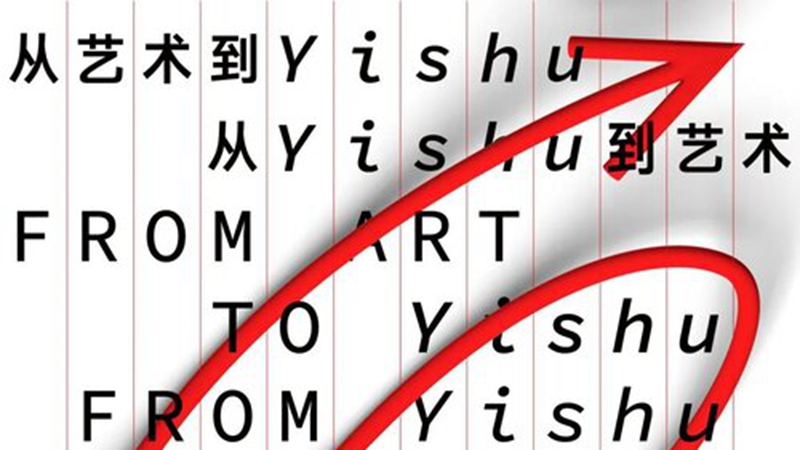Inside-Out Practice|Series of interviews with authors from Yishu #7

Patricia Eichenbaum Karetzkyis
Receiving her B.A. from New York University, M.A. from Hunter College and Ph.D., from the Institute of Fine Arts, New York University, Patricia Eichenbaum Karetzkyis the Oskar Munsterberg Chair of Asian Art at Bard College, New York since 1988 and Adjunct Professor at Lehman College, City College of New York since 1994. Patricia has dual interests in contemporary and medieval Chinese art. She was assistant editor, co-editor, and editor of the Journal of Chinese Religions from 1991 to 1998 and has published numerous books and articles on medieval Chinese religious art and a multitude of articles on contemporary art in such journals asYishu, the Journal of Contemporary Art, and n.paradoxa. She has also curated many exhibitions and written catalogues on Chinese contemporary art.
1. What is your story with Yishu journal? When did you start writing for Yishu?
My first article appeared in 2004, I have been a regular contributor.
2. How many articles have you published in Yishu? What are they about?
I have published 21 articles since 2004. Mostly these are profiles of individual artists who I met, interviewed at length, and studied.
3. Why do you choose to write for Yishu? In what ways do you think Yishu distinguishes itself from other art journals? What is particularistic about Yishu?
4. What is it like to work with Yishu’s editors?
5. What is your research area? What have you been working on recently?
6. The inaugurating issue of Yishu in 2002 posed a series of questions to prominent art practitioners in Chinese contemporary art. Now that Yishu has arrived at its milestone of 100 issues, we’d like to pose some of these questions to you: What are your thoughts regarding the situation of art and culture in China today? What does Chinese art and culture mean to you? What does “China” mean to you?
In the last two decades, the number of artists practicing in China has grown exponentially, and they are exploring new ways of creating art, styles, formats, and techniques. In addition, there has been a dramatic development in the field of art criticism with a concurrent expansion of art institutions, especially museums, and of such professionals as curators, teachers, and scholars. In a wider consideration of art production, the global and digital display of Chinese art along with a multitude of transnational and diaspora artists challenge a strict definition of national cultural identity. Conversely, in China, there is a resurgent interest in pre-Communist art that asserts the validity of the native culture, its values, and aesthetic forms of expression. This movement is in part a response to the overwhelming authority of western art styles that dominate the curriculum of college art schools. In sum, the field of contemporary art has expanded greatly in several directions over the last two decades.
As a specialist in Chinese medieval art, I am interested in the relationship between the traditional aesthetic, philosophical and religious traditions and their relevance in the modern world: these prove to be an essential part of the cultural atmosphere. The study of the wisdom, aesthetic beauty, and diversity of artistic expression of China is always enriching.
7. What are your thoughts regarding the situation of art criticism today?
I am not really concerned with art criticism and as my training is in art history, I am more interested in appreciating the aesthetic language of art and its socio-religious contexts.
8. Keith Wallace has posed a question in the 100th edition of Yishu, and we’d like to pose the same question to you: What are the most significant developments that have taken place in contemporary Chinese art in the past two decades in terms of the art produced and systems it functions within?
Exposed to the global production and display of art, Chinese artists adopt various styles, media, formats, and theories. They are free to explore the multitude of aesthetic avenues far beyond the restrictions of brush and ink. For example, sculpture, which was never considered a primary art in China, along with installation, performance, body and conceptual art provide practitioners with new media for expression, coupled with investigations in light and sound art, video and animation. At the same time there is a growing appreciation of the traditional forms of art and the great culture that informs it. What is more, the Chinese artist is quite self-conscious of these trends and the role of art in society. Awareness of the importance of the market is widespread and often disparaged in socially conscious art which attests to the abuses of society. Employing new media, this kind of art fulfills the ancient function of the artist as an observer of the ills of society and the hope of remedy.
Interview Planning: Liu Yusi, Huang Wenlong
Interview Translation:Ninjia
Proof-reading:Ninjia, Liu Yusi, Zhang Ligeng, Huang Wenlong
Post Editing: Liu Qian
Design: Onion


Leave a Reply